

Guest Reviews This tour doesn't have any reviews because it is a new tour. Be the first to review it!
Daily Mileage: 6-8 miles
7 Days
Starting From
$3,745.00
10 Days
Starting From
$4,995.00
per person, double occupancy


































































































There’s something about Provence that inspires great art. Maybe it’s the golden sunlight pouring over sunflower fields, or perhaps it’s the aroma of olives, verbena, and fresh baguettes rising above the hustle-bustle of its lively outdoor markets. One thing is for sure: on this self-guided Country Walkers adventure, we’ve given you the opportunity to explore Provence from many angles. Stroll the cobblestone streets of Saint-Rémy-de-Provence and follow the steps of the great master on the Van Gogh Trail. Discover the quaint village of Les Baux-de-Provence—perhaps taking in a show at the Carrières de Lumières museum. We’ve found a charming stone farmhouse in Gordes for your stay, and charted a course to let you revel in views of the red cliffs of Roussillon-en-Provence. With a detailed audio navigation app and a friendly local host, this self-guided adventure offers the perfect balance of flexibility and support.
Country Walkers is proud to support Wine to Water with a donation on behalf of each guest on this tour. Wine to Water is an international organization providing access to clean drinking water and emergency supplies in water-challenged regions. We believe in giving back to the places that have enriched the lives of our guests. We’re committed to identifying and supporting sustainable initiatives in a variety of areas including education, world health, economic equality, safe drinking water, the environment, and the preservation of cultural traditions.





This tour is one of our Self-Guided Walking Adventures, rated easy to moderate, with an average of 6 to 8 miles per day and limited options. There are daily ascents and descents—with some steep sections—up to 1,000 feet. Walks are through oak and pine forests, rugged hills dotted with Mediterranean herbs and shrubs, terraced farmland, and hillside vineyards. The terrain includes single-track trails, mostly cobbled but also loose stones or gravel. The terrain also includes farming tracks, some dirt roads, and occasionally a paved country road. This diverse itinerary combines both the Alpilles and the Luberon mountain ranges, passing scenes painted by Van Gogh as well as golden hilltop villages, with plenty of time for trailside picnics and exploring archaeological sites or markets. Remember: preparation is the key to ensuring your tour readiness; the more you walk or participate in aerobic exercise prior to your trip, the more you will enjoy your experience!
| Tour Day | Choose Your Route Options | Miles per Option | Hours per Option** | Elevation per Option*** | Activity Level |
|---|---|---|---|---|---|
| 2 | ShortLong | 6.211.2 | 03:0006:00 | +800/-800+1800/-1800 | easy-moderatechallenging |
| 3 | Walk | 6.2 | 03:30 | +900 | easy-moderate |
| 4 | Walk | 6.2 | 03:15 | +800/-800 | easy-moderate |
| 5 | LongShort | 7.53.5 | 03:4503:45 | +1050 / -800+750 | easy-moderateeasy-moderate |
| 6 | Walk | 3 | 01:30 | easy |
Alternate options may be available
**Route mileage, hours, and elevation gain/loss are all approximate
***Elevation gain/loss indicated if greater than 500 feet
Sun, May 4 to Tue, May 13, 2025
Your vacation is about to begin! Spend your first night aloft and arrive ready for an unforgettable trip.
Upon arrival at Marseille Airport, make your own independent travel arrangements to your centrally located hotel in Avignon. For details, refer to your Vacation Preparation Handbook. The rest of the day is yours to enjoy at your leisure—perhaps explore the city, rest up in the hotel, or select a local restaurant for lunch and dinner. We provide detailed city information to help you plan your day. Please note: If you arrive early, your hotel room may not be available until 4:00 p.m., in which case you may store your luggage with the reception desk.
You are met in Avignon and transported about 25 minutes to the classic southern French town of Saint-Rémy-de-Provence at the foot of the Alpilles Mountains. Renaissance mansions, restored homes, and historic buildings line the winding streets of the town, which has the distinction of being the birthplace of Nostradamus. With scenery that inspired many a great artist—most notably Vincent Van Gogh—Saint-Rémy-de-Provence is a blend of natural beauty and Provençal life with its cobblestone streets, old fountains, and sidewalk cafés. It is also home to a legendary open-air Wednesday market, with vendors selling fresh vegetables, bread, wine, olive oils, herbs, spices, and much more from stalls throughout the curving alleys and shady squares of the old town. Relax with an apéritif of chilled pastis (the local anise-flavored liqueur) at your accommodation, beneath the shade of the fig trees your hotel is named for. Dinner tonight is a short walk away at a local restaurant.
Included Meals: Breakfast, Dinner
6.9 miles, easy to moderate, 900-ft. elevation gain and loss. Additional optional detour: 5.3 miles, challenging, 1,600-ft. total elevation gain and loss
Today you follow the Van Gogh trail through the landscape that inspired the artist. Along your walk, you’ll find replicas of paintings displayed beside the very scenes that inspired them. Viewing Van Gogh’s works beside the Trinquetaille Bridge, the Rhone Waterfront, and the Hospital Garden, you’ll see how these everyday settings appeared in the artist’s eyes. Next, explore the ancient Roman ruins of Glanum, once a powerful city. Glanum’s most important monuments include an imposing triumphal arch and a mausoleum. At one time, Glanum was a religious compound with many temples, and today several ornate pillars remain. Perhaps as a continuation of your Van Gogh tour, you’ll make a visit to the Saint-Paul de Mausole, a former monastery, now a psychiatric hospital where Van Gogh spent his final year. During a tour, you can view the room where Van Gogh stayed during his time at the institution. Afterward, follow a winding botanical path up a gradual trail to the crest of the Alpilles Mountains. Aromatic herbs and wildflowers carpet the hills as the views extend far into the horizon—a perfect setting for a picnic lunch. Upon your return to St. Rémy, the rest of the day is at your leisure.
Included Meals: Breakfast
6.8 miles, easy to moderate, 950-ft. elevation gain and 600-ft. elevation loss
Today, once again, you leave St. Rémy on foot ascending the Alpilles, but this time you’ll take a different path to the top. Follow a rolling trail along the ridge to awe-inspiring 360-degree views, which continue as the path gently undulates toward the fortified medieval village of Les Baux-de-Provence, set atop a rocky perch. Here, you’ll stop to eat lunch (before 2:00 p.m. if you opt for one of the many restaurants in town), and then take some time to explore the village itself, one of the official “most beautiful villages of France.” Enjoy spectacular views from the Chateau des Baux fortress, an area atop a high, rocky pinnacle dotted with the ruins of castle walls. You may opt to visit the exciting Carrières de Lumières museum, famed for its unique, all-encompassing audio-visual shows. A one-hour afternoon drive takes you to the Luberon Mountains and the village of Gordes, your home for the next two nights, and classified as another one of the “most beautiful villages of France.” After settling in at your hotel, stroll into town for dinner on your own.
Included Meals: Breakfast
6.3 miles, easy to moderate, 950-ft. elevation gain and loss
The paths around Gordes are lined with old stone walls, lone farmhouses, and bories—centuries-old round shepherd’s huts constructed from dry stone. Many bories were an end to a means for the ancient shepherds and farmers who created them—as they cleared their fields, they repurposed the stones to create a shelter. Follow a path into a valley, and soon you’ll come upon the 12th-century Sénanque Abbey, sitting amid some of the very few lavender fields in the area (which are in bloom from late June through July). Founded in 1148, today the abbey is home to Cistercian monks who tend the lavender fields and also keep honeybees. It’s a great place to enjoy a delicious picnic lunch and admire the peaceful scenery. Be sure to visit the abbey before your return hike. A somewhat steep climb brings you back to Gordes. Stop along the way and take in stunning vistas of the town and landscape below. Back at your hotel, late-afternoon relaxation may include a refreshing swim before a drink and another delightful dinner.
Included Meals: Breakfast
7.5 miles, easy to moderate, 1,200-ft. elevation gain and 800-ft. elevation loss OR 2.6 miles, easy to moderate, 750-ft. elevation gain and 200-ft. elevation loss
Today you can choose from two walking options. For the longer option, a short taxi ride brings you to the Calavon Valley and the timeless village of Goult—perhaps the least-known and least-visited of the “most beautiful villages” in the Petit Luberon area. Starting at the town’s Romanesque church, medieval lanes lead you to the restored 18th-century Moulin de Jérusalem—one of the few remaining windmills that were strategically placed on the region’s ridges to grind grain. With sweeping views of the Calavon Valley below, you make your way past bories and farmhouses to the neighboring village of Lacoste, once home to the infamous Marquis de Sade, a shameless hedonist whose free-thinking (and free-living lifestyle) landed him in prison. The Marquis’ 11th-century château sits tall above the town and has been recently purchased (and restored) by fashion designer Pierre Cardin. Continue back into the valley (or begin from here if you choose the shorter walking option) through cherry orchards, vineyards, and truffle oak plantations. As you near the village of Bonnieux, the first thing you’ll see is its 12th-century church tower peeking out from under a canopy of massive cedar trees. This hillside town boasts superb architecture—evidence of the town’s former wealth, when it was the residence of bishops. There are many dining options to consider for lunch—some with spectacular views over the valley—before a 15-minute taxi ride delivers you to Roussillon-en-Provence, your home for the next two nights.
Charming and historic, Roussillon is renowned as one of the most beautiful villages in France. It lies within the Natural Regional Park of Luberon, whose three mountain ranges—Lesser Luberon, Greater Luberon, and Eastern Luberon—offer a vast network of walking trails. But perhaps this area is best known as the scenic setting of Peter Mayle’s A Year in Provence, which chronicled the author’s stay here. Late this afternoon, settle into your hotel with a refreshing swim before stepping out to dinner at one of our recommended local restaurants.
Included Meals: Breakfast
3 miles, easy, 300-ft. elevation gain and loss
Your final day provides ample opportunity to relax and drink in the stunning beauty of Roussillon-en-Provence, its magnificent red cliffs and gorgeous surroundings a fitting cap to your walking adventure. This honey-hued village stands upon an ochre ridge. The richly colored clay here was heavily mined in the 18th century, its pigment used in textiles. Today, mining is prohibited so that the region’s fiery beauty can be preserved. Your walk today follows the Sentier des Ocres, or the Ochre Path.
You may choose a 30-minute or 60-minute walk along a marked path through a spectacular landscape sculpted by water, wind, and the intrusions of humans from centuries past. Pause as you wish to admire soaring cliffs, finger-like formations pointing skyward, and clusters of evergreens. This is unlike any other area you’ve explored in Provence. Take your time here, perhaps packing a picnic for a scenic lunch amid the red and golden contours of the park.
There’ll also be time today to visit Roussillon’s Ochre Museum, located in a former factory once operated by the local Mathieu family. The historic space also serves as a conservatoire, or workshop. Browse the village shops for some keepsakes of your visit, linger at a café or restaurant, or relax by the hotel’s inviting pool. Dinner is on your own once again.
Included Meals: Breakfast
After breakfast, transportation will be provided to Aix-en-Provence, where you are free to enjoy a final day of exploration (lunch and dinner are on your own).
Included Meals: Breakfast
After an included breakfast, make your own independent travel arrangements to Marseille Airport for your onward travels.
Included Meals: Breakfast



Tue, May 6 to Mon, May 12, 2025
You are met in Avignon and transported about 25 minutes to the classic southern French town of Saint-Rémy-de-Provence at the foot of the Alpilles Mountains. Renaissance mansions, restored homes, and historic buildings line the winding streets of the town, which has the distinction of being the birthplace of Nostradamus. With scenery that inspired many a great artist—most notably Vincent Van Gogh—Saint-Rémy-de-Provence is a blend of natural beauty and Provençal life with its cobblestone streets, old fountains, and sidewalk cafés. It is also home to a legendary open-air Wednesday market, with vendors selling fresh vegetables, bread, wine, olive oils, herbs, spices, and much more from stalls throughout the curving alleys and shady squares of the old town. Relax with an apéritif of chilled pastis (the local anise-flavored liqueur) at your accommodation, beneath the shade of the fig trees your hotel is named for. Dinner tonight is a short walk away at a local restaurant.
Included Meals: Dinner
6.9 miles, easy to moderate, 900-ft. elevation gain and loss. Additional optional detour: 5.3 miles, challenging, 1,600-ft. total elevation gain and loss
Today you follow the Van Gogh trail through the landscape that inspired the artist. Along your walk, you’ll find replicas of paintings displayed beside the very scenes that inspired them. Viewing Van Gogh’s works beside the Trinquetaille Bridge, the Rhone Waterfront, and the Hospital Garden, you’ll see how these everyday settings appeared in the artist’s eyes. Next, explore the ancient Roman ruins of Glanum, once a powerful city. Glanum’s most important monuments include an imposing triumphal arch and a mausoleum. At one time, Glanum was a religious compound with many temples, and today several ornate pillars remain. Perhaps as a continuation of your Van Gogh tour, you’ll make a visit to the Saint-Paul de Mausole, a former monastery, now a psychiatric hospital where Van Gogh spent his final year. During a tour, you can view the room where Van Gogh stayed during his time at the institution. Afterward, follow a winding botanical path up a gradual trail to the crest of the Alpilles Mountains. Aromatic herbs and wildflowers carpet the hills as the views extend far into the horizon—a perfect setting for a picnic lunch. Upon your return to St. Rémy, the rest of the day is at your leisure.
Included Meals: Breakfast
6.8 miles, easy to moderate, 950-ft. elevation gain and 600-ft. elevation loss
Today, once again, you leave St. Rémy on foot ascending the Alpilles, but this time you’ll take a different path to the top. Follow a rolling trail along the ridge to awe-inspiring 360-degree views, which continue as the path gently undulates toward the fortified medieval village of Les Baux-de-Provence, set atop a rocky perch. Here, you’ll stop to eat lunch (before 2:00 p.m. if you opt for one of the many restaurants in town), and then take some time to explore the village itself, one of the official “most beautiful villages of France.” Enjoy spectacular views from the Chateau des Baux fortress, an area atop a high, rocky pinnacle dotted with the ruins of castle walls. You may opt to visit the exciting Carrières de Lumières museum, famed for its unique, all-encompassing audio-visual shows. A one-hour afternoon drive takes you to the Luberon Mountains and the village of Gordes, your home for the next two nights, and classified as another one of the “most beautiful villages of France.” After settling in at your hotel, stroll into town for dinner on your own.
Included Meals: Breakfast
6.3 miles, easy to moderate, 950-ft. elevation gain and loss
The paths around Gordes are lined with old stone walls, lone farmhouses, and bories—centuries-old round shepherd’s huts constructed from dry stone. Many bories were an end to a means for the ancient shepherds and farmers who created them—as they cleared their fields, they repurposed the stones to create a shelter. Follow a path into a valley, and soon you’ll come upon the 12th-century Sénanque Abbey, sitting amid some of the very few lavender fields in the area (which are in bloom from late June through July). Founded in 1148, today the abbey is home to Cistercian monks who tend the lavender fields and also keep honeybees. It’s a great place to enjoy a delicious picnic lunch and admire the peaceful scenery. Be sure to visit the abbey before your return hike. A somewhat steep climb brings you back to Gordes. Stop along the way and take in stunning vistas of the town and landscape below. Back at your hotel, late-afternoon relaxation may include a refreshing swim before a drink and another delightful dinner.
Included Meals: Breakfast
7.5 miles, easy to moderate, 1,200-ft. elevation gain and 800-ft. elevation loss OR 2.6 miles, easy to moderate, 750-ft. elevation gain and 200-ft. elevation loss
Today you can choose from two walking options. For the longer option, a short taxi ride brings you to the Calavon Valley and the timeless village of Goult—perhaps the least-known and least-visited of the “most beautiful villages” in the Petit Luberon area. Starting at the town’s Romanesque church, medieval lanes lead you to the restored 18th-century Moulin de Jérusalem—one of the few remaining windmills that were strategically placed on the region’s ridges to grind grain. With sweeping views of the Calavon Valley below, you make your way past bories and farmhouses to the neighboring village of Lacoste, once home to the infamous Marquis de Sade, a shameless hedonist whose free-thinking (and free-living lifestyle) landed him in prison. The Marquis’ 11th-century château sits tall above the town and has been recently purchased (and restored) by fashion designer Pierre Cardin. Continue back into the valley (or begin from here if you choose the shorter walking option) through cherry orchards, vineyards, and truffle oak plantations. As you near the village of Bonnieux, the first thing you’ll see is its 12th-century church tower peeking out from under a canopy of massive cedar trees. This hillside town boasts superb architecture—evidence of the town’s former wealth, when it was the residence of bishops. There are many dining options to consider for lunch—some with spectacular views over the valley—before a 15-minute taxi ride delivers you to Roussillon-en-Provence, your home for the next two nights.
Charming and historic, Roussillon is renowned as one of the most beautiful villages in France. It lies within the Natural Regional Park of Luberon, whose three mountain ranges—Lesser Luberon, Greater Luberon, and Eastern Luberon—offer a vast network of walking trails. But perhaps this area is best known as the scenic setting of Peter Mayle’s A Year in Provence, which chronicled the author’s stay here. Late this afternoon, settle into your hotel with a refreshing swim before stepping out to dinner at one of our recommended local restaurants.
Included Meals: Breakfast
3 miles, easy, 300-ft. elevation gain and loss
Your final day provides ample opportunity to relax and drink in the stunning beauty of Roussillon-en-Provence, its magnificent red cliffs and gorgeous surroundings a fitting cap to your walking adventure. This honey-hued village stands upon an ochre ridge. The richly colored clay here was heavily mined in the 18th century, its pigment used in textiles. Today, mining is prohibited so that the region’s fiery beauty can be preserved. Your walk today follows the Sentier des Ocres, or the Ochre Path.
You may choose a 30-minute or 60-minute walk along a marked path through a spectacular landscape sculpted by water, wind, and the intrusions of humans from centuries past. Pause as you wish to admire soaring cliffs, finger-like formations pointing skyward, and clusters of evergreens. This is unlike any other area you’ve explored in Provence. Take your time here, perhaps packing a picnic for a scenic lunch amid the red and golden contours of the park.
There’ll also be time today to visit Roussillon’s Ochre Museum, located in a former factory once operated by the local Mathieu family. The historic space also serves as a conservatoire, or workshop. Browse the village shops for some keepsakes of your visit, linger at a café or restaurant, or relax by the hotel’s inviting pool. Dinner is on your own once again.
Included Meals: Breakfast
After breakfast, transportation will be provided to Aix-en-Provence where you are free to enjoy a final day of exploration or make connections for onward travels (lunch and dinner are on your own).
Included Meals: Breakfast



Arrival Day
Hotel Cloitre Saint-Louis
Hotel Cloitre Saint-Louis is located in the historic town of Avignon. This 16th-century former military hospital built on the remains of a Jesuit novitiate offers a shaded courtyard, rooftop pool and combines a contemporary décor set in an historic building, including air conditioning, and provides an elegant and peaceful haven after a rewarding day of exploring. Relax in the common areas, including a restaurant featuring Mediterranean flavors, a bar in the shaded garden, a large solarium terrace, as well as a rooftop swimming pool (which was closed in 2021 due to Covid restrictions) with panoramic views of Avignon.




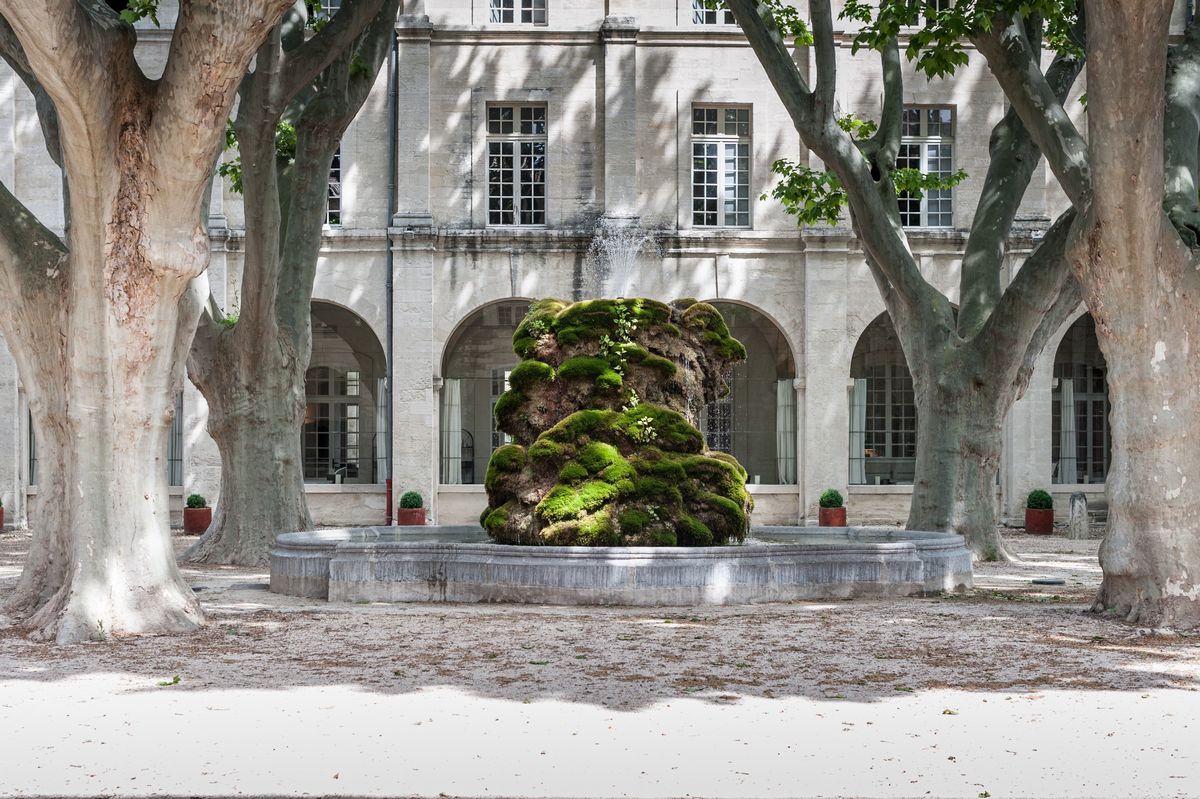



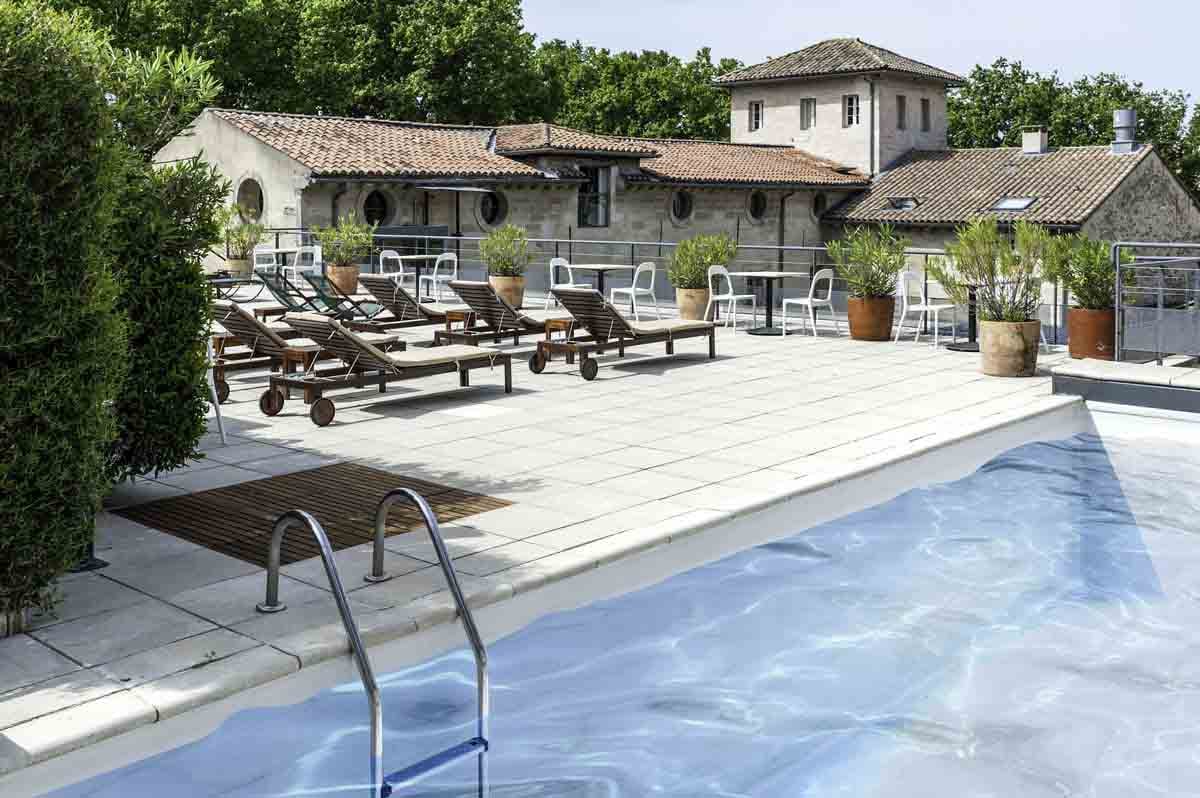







Days 1, 2
Hotel Sous les Figuiers
A charming, small hotel built around an interior courtyard, the Hôtel Sous les Figuiers features individually decorated, air-conditioned guestrooms highlighting Provençal décor supplemented by antiques and artwork. Fresh local products and home-baked regional breads and pastries are on the breakfast menu, served either in the shaded terrace or the Baroque salon. An onsite art studio exhibits contemporary works and encourages local artistic endeavors. A pleasant Provençal town, St. Rémy is best known for the Saint-Paul de Mausole monastery, where Van Gogh received psychiatric treatment. Please note: this accommodation is available on limited departures.








Days 3, 4
Le Mas de la Beaume
Set in a restored stone farmhouse, this charming bed-and-breakfast is just a short stroll from the center of Gordes. Quaint, un-air-conditioned guest rooms are individually decorated with antique furnishings, linen curtains, lavender-adorned wood beams, and waxed walls. In the late afternoon, a swimming pool and surrounding terrace and grounds are bathed in the region’s unique golden light. On a rocky outcropping overlooking classic Provençal landscapes, Gordes, one of France’s loveliest towns, delights with its charm and history dating from the Middle Ages. Please note: this accommodation is available on limited departures.


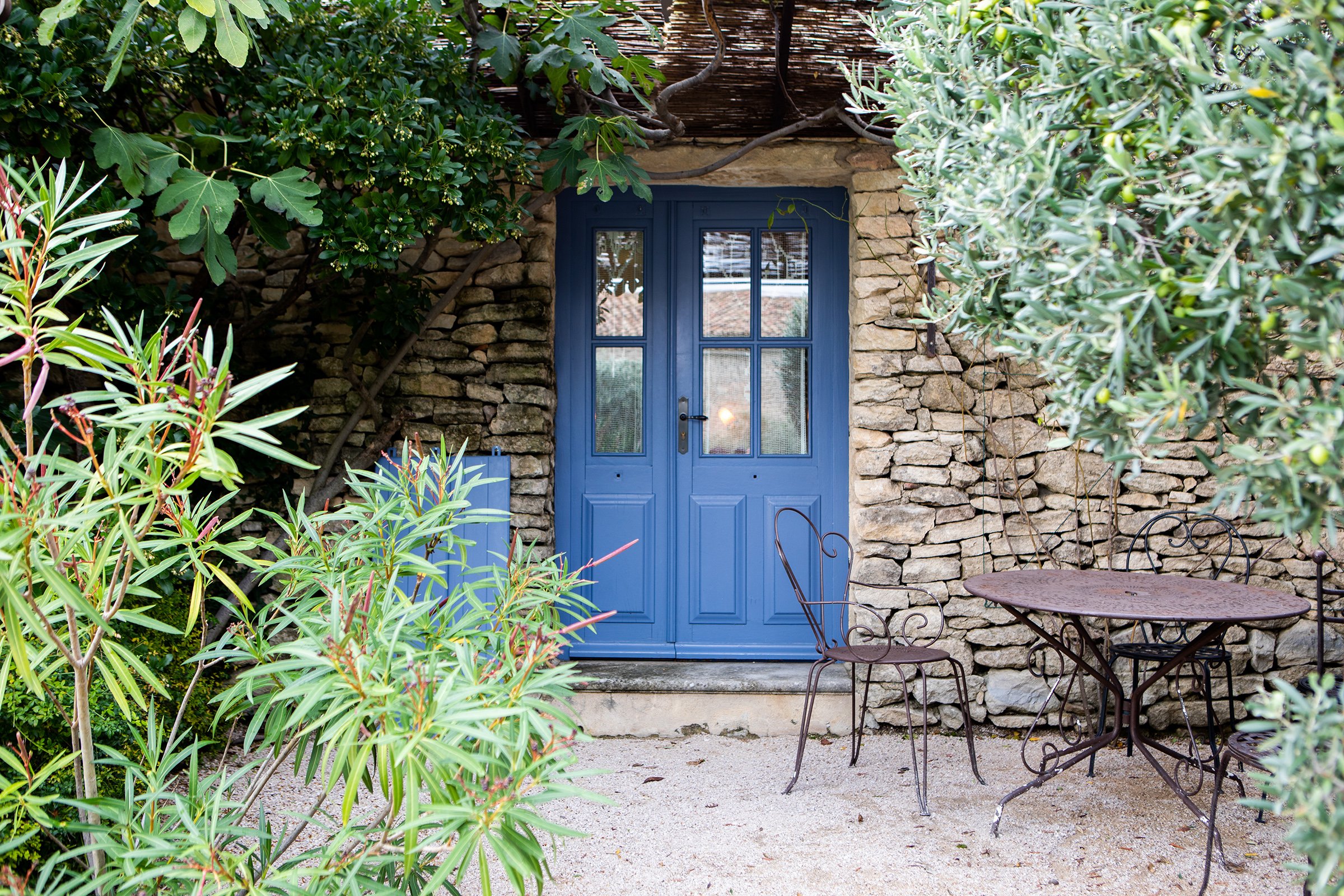

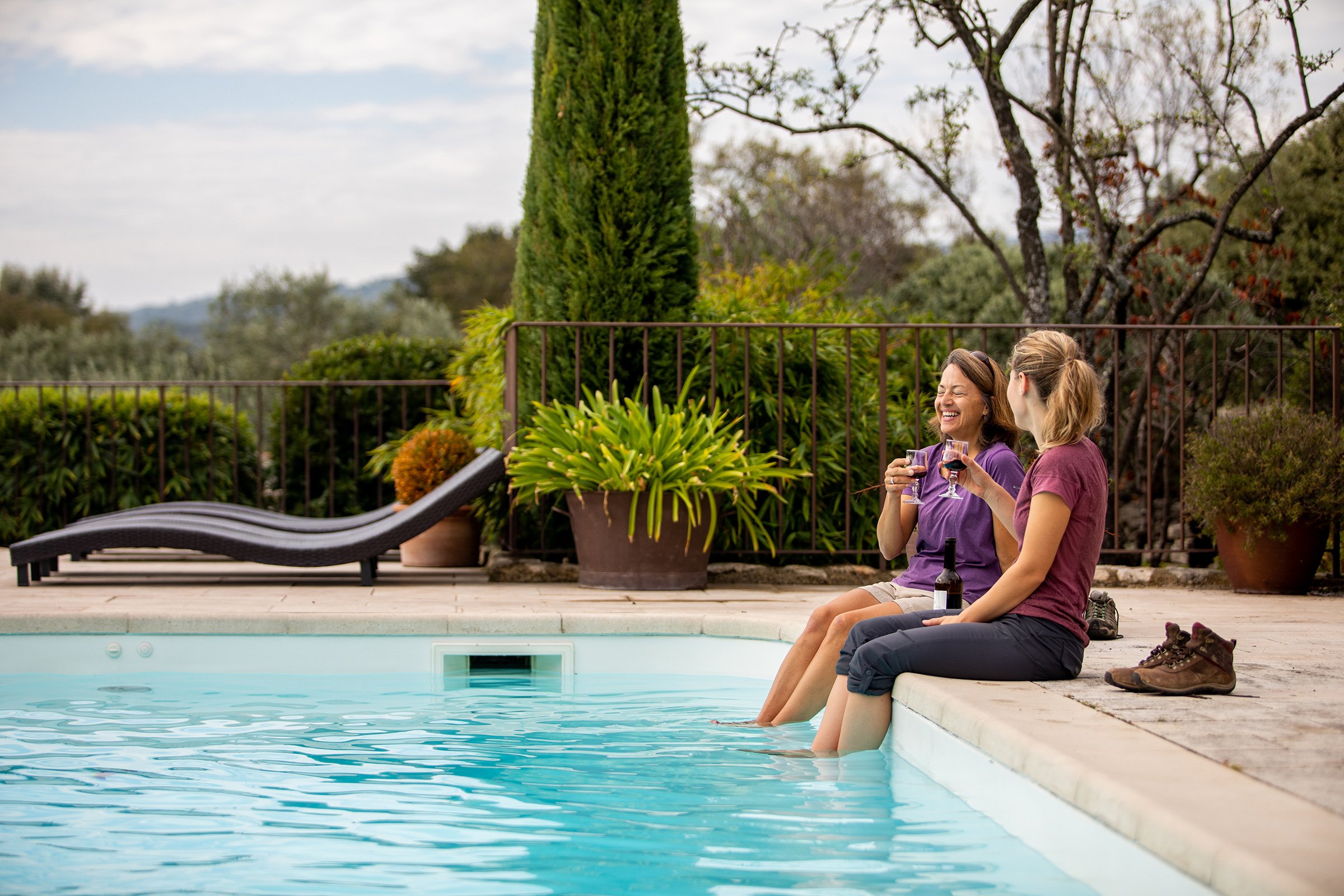



Days 5, 6
Hôtel Les Sables d'Ocre
Set on two-and-a-half acres and just a 15-minute walk from the hilltop village of Roussillon, Les Sables d’Orce boasts lovely gardens and an inviting outdoor pool. The walking trails of Le Sentier des Ocres are a half-mile away, making this a convenient location for exploring. The cheery palates of yellow and ochre evoke the area’s stunning natural surroundings, while the comfortable air-conditioned rooms and attentive staff embody the famed Provençal hospitality. Country Walkers guests enjoy a private balcony or terrace during their stay. Please note: this accommodation is available on limited departures.




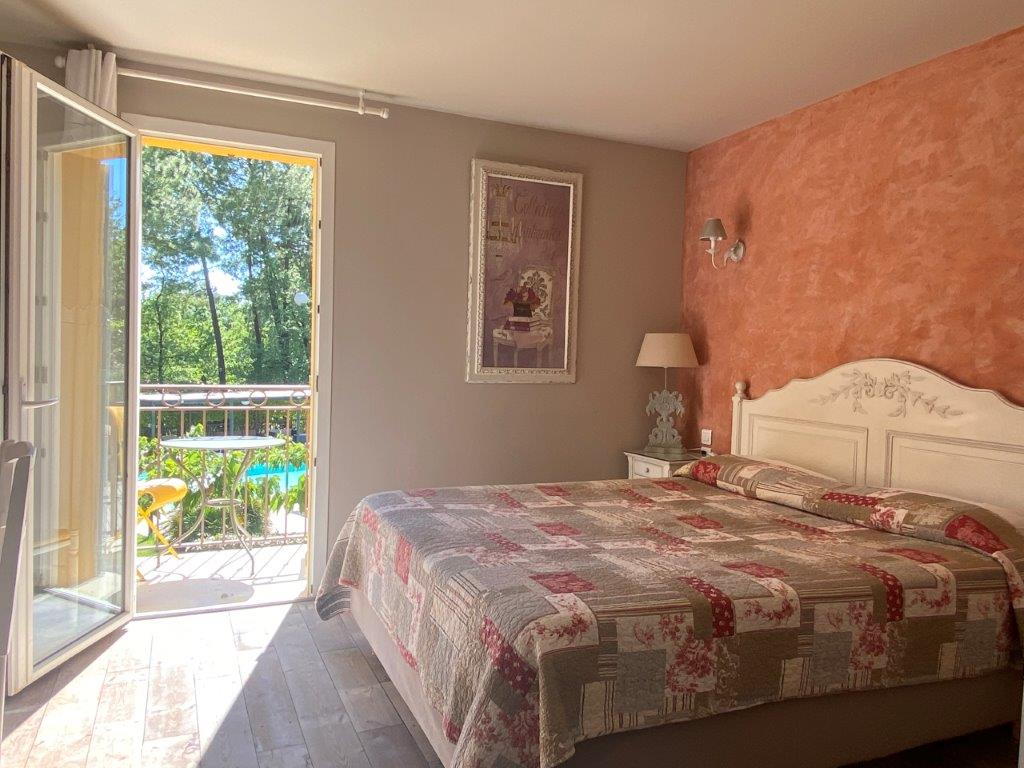



Day 7
Grand Hotel Roi Rene
The Grand Hôtel Roi René Aix-en-Provence Centre-MGallery by Sofitel is ideally situated near the famous Cours Mirabeau in the heart of the Old Town of Aix-en-Provence. The town’s lovely pedestrian squares and fountains, tree-lined main street, and museums are all within a short walk. Contemporary, bright guest rooms feature neutral fabrics and are fully equipped with air conditioning, satellite TV, direct-dial telephone, minibar, bathrobes, and slippers. You’ll also enjoy free WiFi access throughout the hotel during your stay.








What's Included |
Tour Only | Air Package |
|---|---|---|
| Boutique accommodations |
|
|
| 7 on-tour meals: 6 breakfasts and 1 dinner |
|
|
| Ride with GPS (custom downloadable GPS route notes and turn-by-turn voice navigation; smartphone required) |
|
|
| Orientation meeting with a Country Walkers representative |
|
|
| Local representative available 24/7 |
|
|
| Scheduled on-tour taxi and luggage transportation (Please note: If unable to walk, it is possible to travel with your luggage from one accommodation to the next; there may be an additional charge.) |
|
|
| Roundtrip international airfare | Not Included |
|
| Business-class upgrades available | Not Included |
|
| One extra night in Avignon and one extra night in Aix-en-Provence | Not Included |
|
| Pre- and post-tour breakfasts | Not Included |
|
| Detailed information for your independent travel to/from arrival and departure airports | Not Included |
|





Please note: Special savings cannot be combined with any other offer. Standard Terms & Conditions apply when purchasing this trip. Prices include all airline surcharges and Government taxes and fees. Ask our Tour Consultants for details. Every effort has been made to produce this information accurately. We reserve the right to correct errors. Prices are based on preferences selected above, including meals and sightseeing as specified in What’s Included. All prices are subject to change. Departure dates and prices shown may be updated several times daily, and apply to new bookings only.


Guest Reviews This tour doesn't have any reviews because it is a new tour. Be the first to review it!


0 of 4
Tours Selected
We highly recommend accessing our website using a different browser (such as Google Chrome, Mozilla Firefox, Safari, or Microsoft Edge). Microsoft is transitioning away from Internet Explorer and towards their new internet browser platform, Microsoft Edge. Because of this, you may experience limited functionality accessing this site using Internet Explorer.